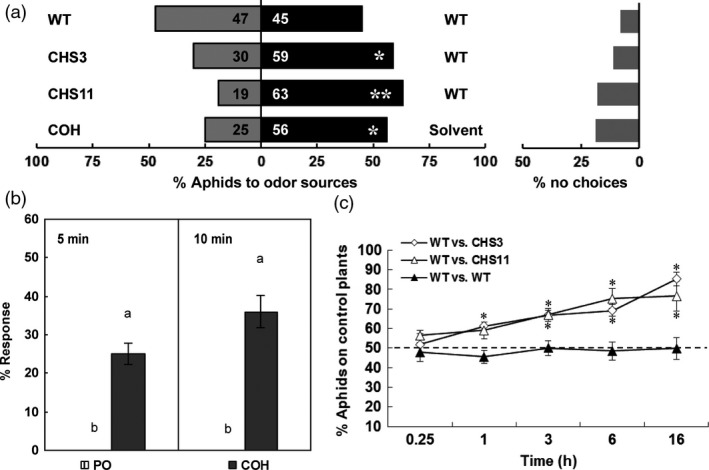Figure 5.

Dual‐choice and alarm behaviour assay of aphids. (a) Olfactory preference of aphids in dual‐choice assay for wild type and transgenic chrysanthemum leaves and 10 μL 10% (v/v) COH standard dissolved in paraffin oil vs 10 μL paraffin oil as positive control. Each bar represents the percentage of aphids that made a choice within 10 min after release (n = 10). The number on the bar represent number of aphids in total. The percentage of aphids did not make a choice (% no choice) indicated on the right. (b) Alarm response of settled aphids to synthetic chrysanthemol in paraffin oil and a paraffin oil control. The percentage of aphids moving after 5 min and 10 min was recorded. Values are the mean ± SE (n = 20). (ANOVA followed by Duncan's multiple range test based on difference of the aphids number.). Columns with different letters indicate responses that are significantly different (P < 0.01). PO, paraffin oil; COH, chrysanthemol. (c) Dual‐choice assay of aphids choosing between wild type and transgenic chrysanthemum plants connected by a paper bridge. The number of aphids on either plant was recorded at 0.25, 1, 3, 6 and 16 h after release. Wild type plants were used as control. Error bars indicate mean ± SE (n = 6). (two‐tailed Wilcoxon signed rank test based on difference of the choices. *: P < 0.05; **: P < 0.01). WT, wild type.
